
by Library News
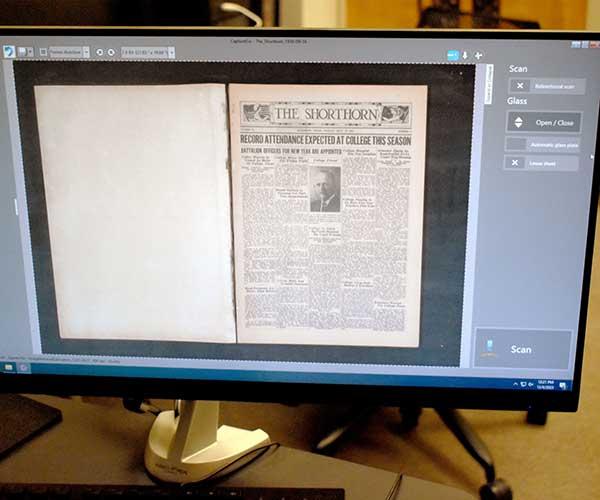
Generations of student voices chronicling UTA's history are being preserved through a project underway in the basement of the Central Library. Copies of "The Shorthorn" newspaper and university yearbooks are being scanned to safeguard history for the future.
Nicholas Williams, a digitization specialist, stated that preserving these items from the past is vital in educating the future.
"We are scanning and digitizing the printed issues of The Shorthorn with the earliest edition from 1919 when UTA was Grubbs Vocational College," Nicholas said. "Paper is not the best material because after a while it deteriorates. So, we lose the information that was there."
Nicholas stated that information from "The Shorthorn" and yearbooks paints a picture of the past, showing the community's makeup at that time. Advertisements in these publications show the businesses that populated the area, and the articles give insight into the news that affected people's lives.
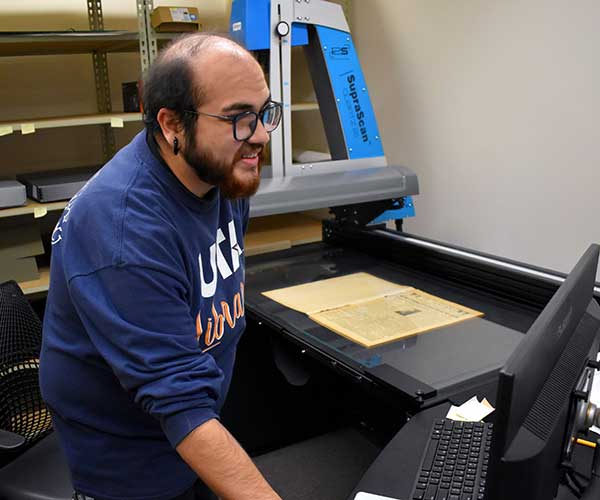
Nicholas Williams, a UTA Libraries digitization specialist, scans a copy of "The Shorthorn" from the 1920s. UTA Libraries is working to digitally preserve copies of "The Shorthorn" and university yearbooks for future generations.
The Shorthorn's website states it has been publishing since April 1919, first as a literary/humor magazine. The first issue was 48 pages with a bull in a bull's-eye for a cover, published monthly until 1921 when it moved to a newspaper format.
Time and care are paramount when each newspaper is handled and placed onto the Quartz scanner to be digitized.
"Some of the newspapers are bound in books, with some having a better condition than others," Nicholas said. "You can tell how brittle and deteriorated the paper has become. So, we have to be very careful when putting the books into the machine."
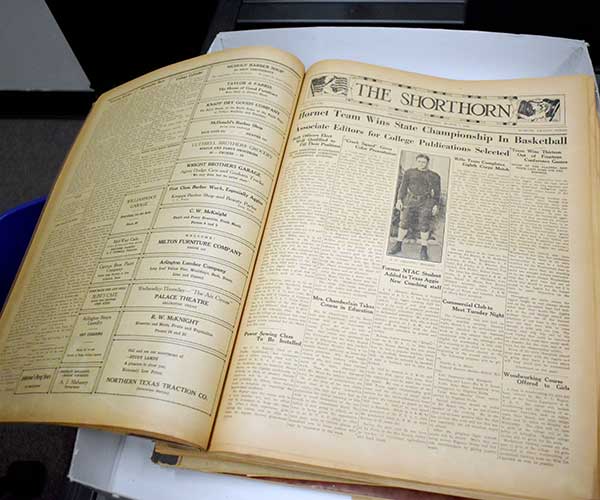
An issue of "The Shorthorn" from the 1920s is waiting to be scanned by UTA Libraries staff members.
Scans only take a few seconds to complete. The jpg file produced from the scan is then converted into a PDF file and will be placed on the archival website, bepress, in the future.
So far, library staff has scanned copies of "The Shorthorn" from 1919 through 1928. They are currently working on papers from the 1928-1930 academic year.
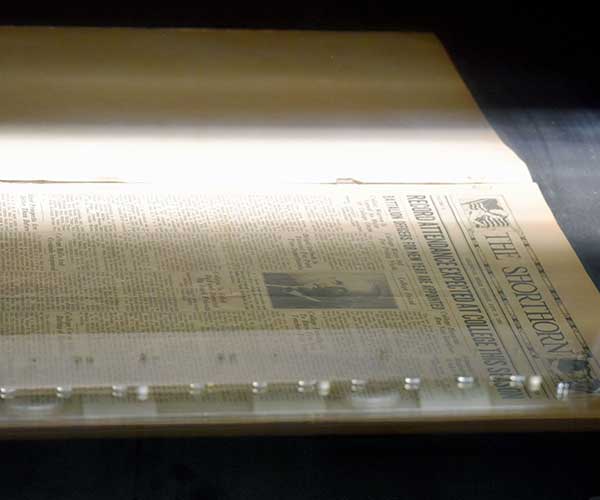
The Quartz scanner scans an issue of "The Shorthorn" from the 1920s.
Yearbooks go through a similar archival process. They are scanned on a flatbed scanner, and the images produced will be placed on the library website at a later date.
So far, staff members have scanned yearbooks from the 1920s, 1940s, 1950s, 1960s, 1970s and 1980s—the earlier yearbook scanned dates from the 1923 or 1924 academic year.
As time progresses, it is essential to remember and learn so that we remember our previous footsteps made on the trail of life.
UTA Libraries staff members' preservation efforts of these documents ensure that valuable lessons will continue to be taught each time they are accessed and read.
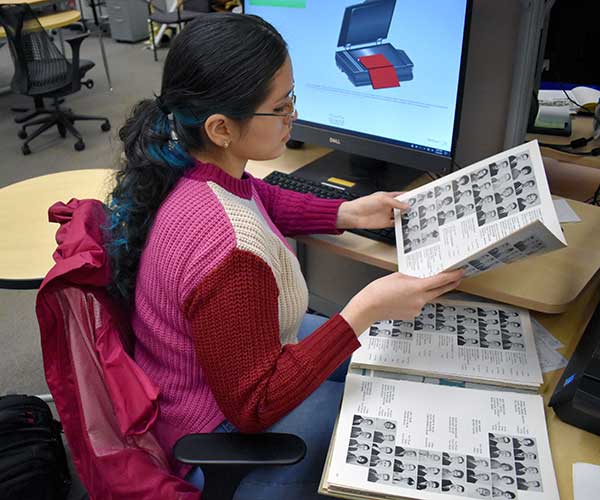
A UTA Libraries student employee works on copies of UTA yearbooks to be scanned.
Add new comment